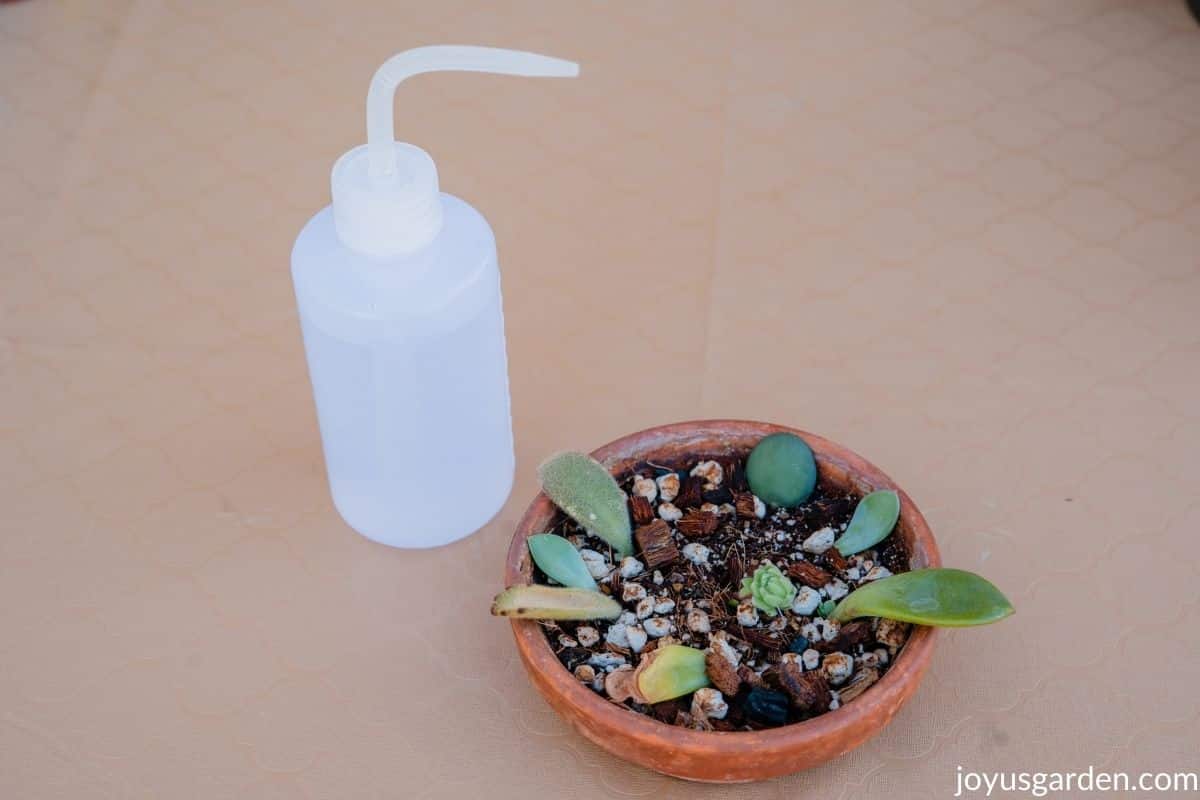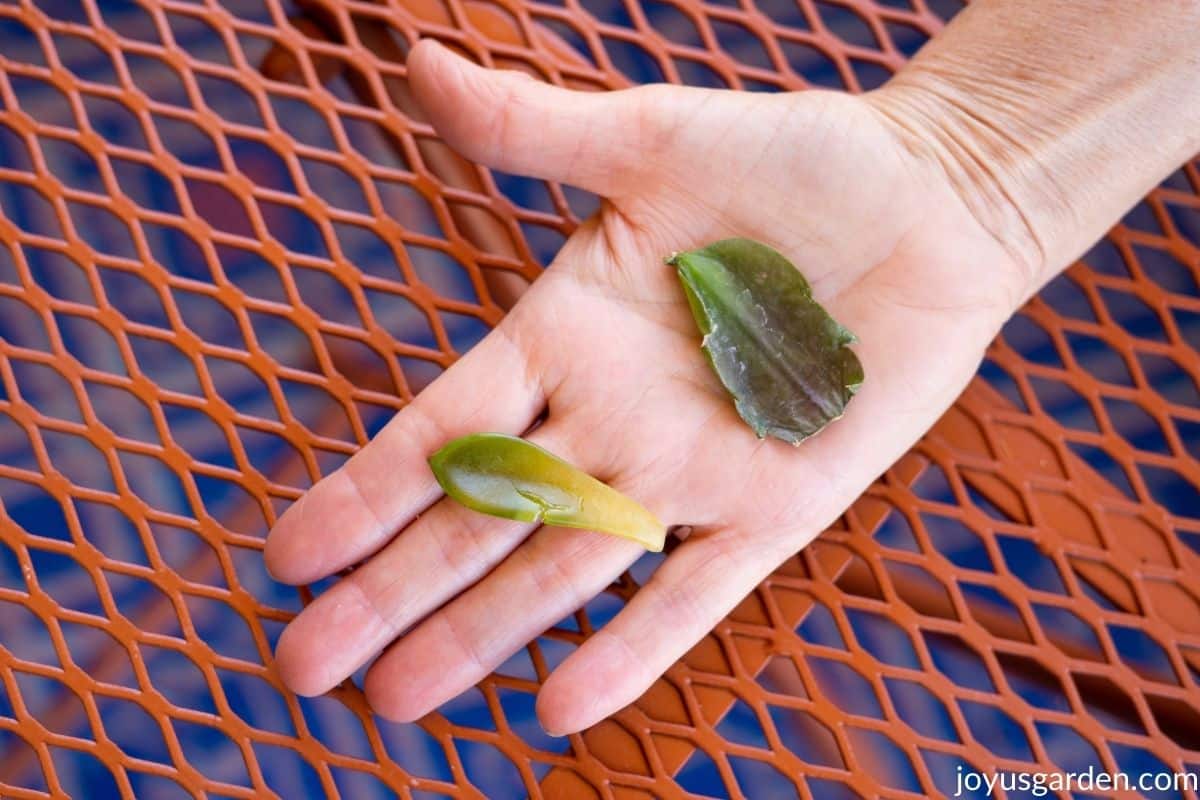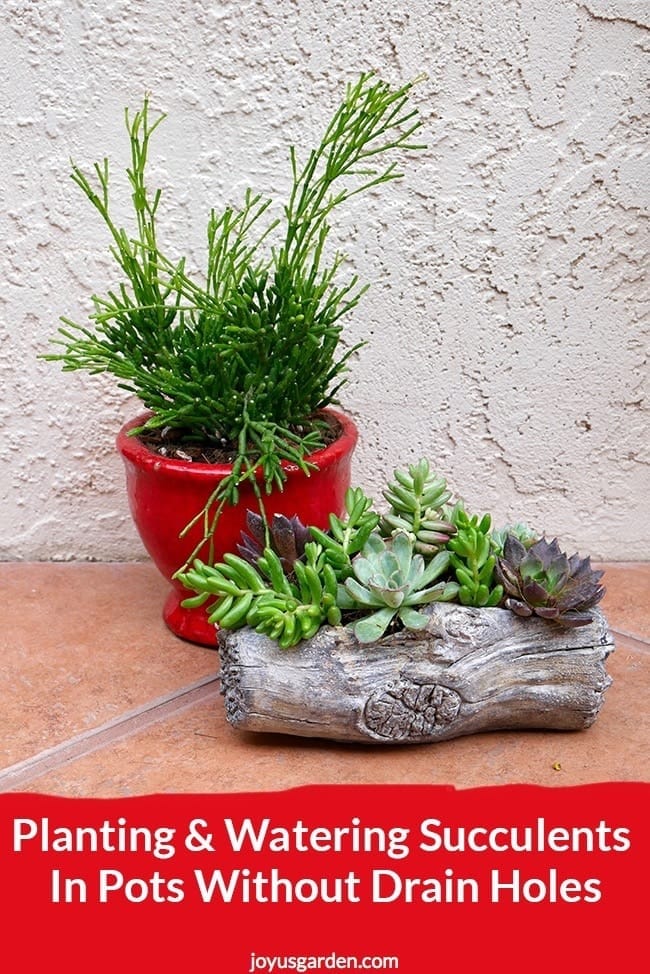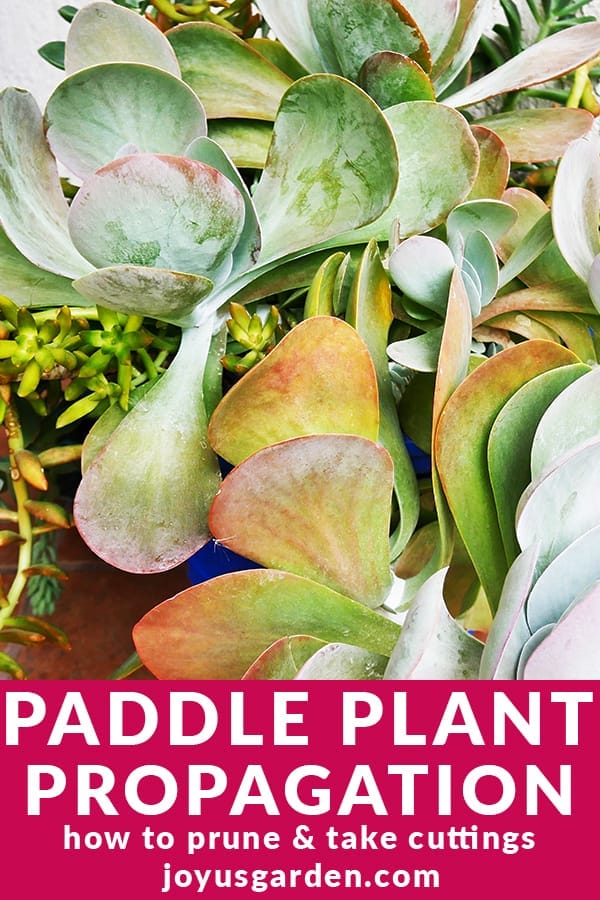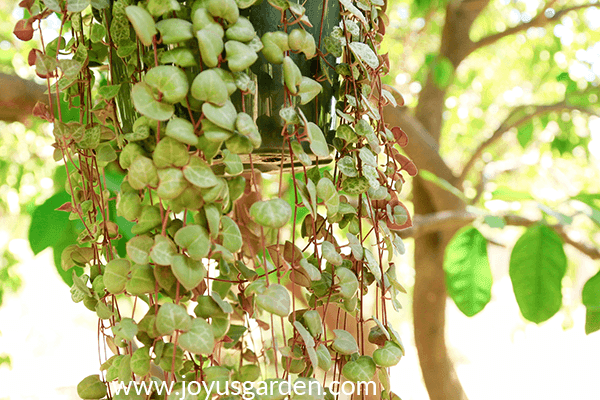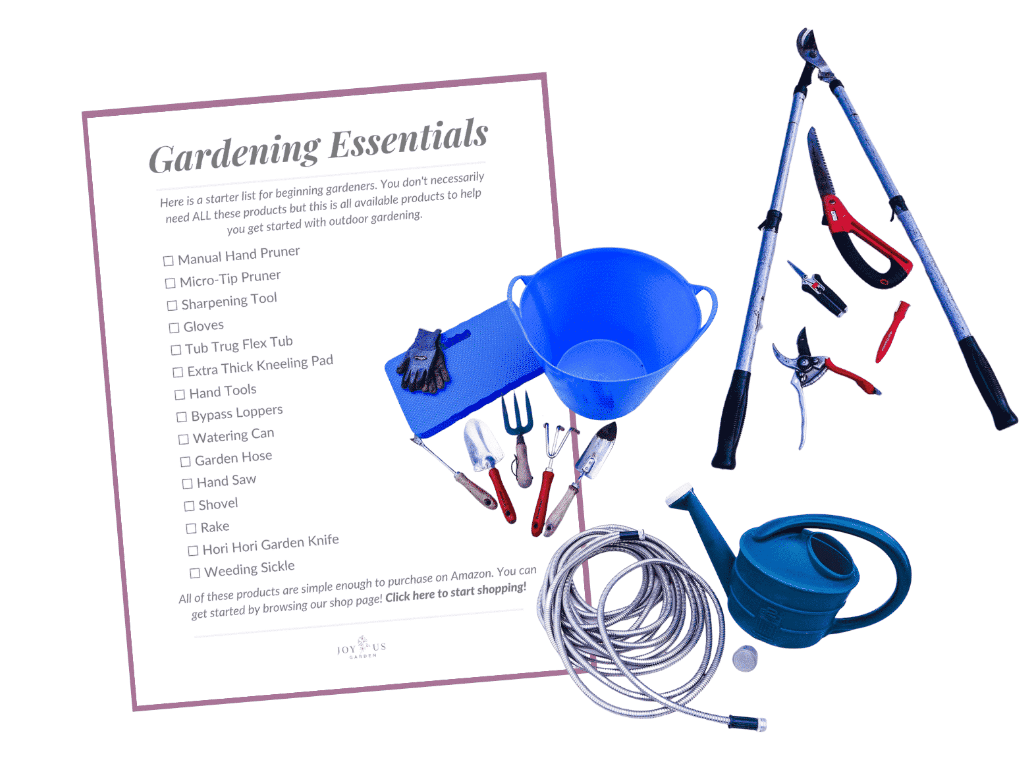A Guide to Watering Succulents Indoors
Most succulents are easy to grow as houseplants. This guide on watering succulents indoors will keep yours alive and growing!
This is important to know, and that’s why it has a post and video. Succulent houseplants can easily “mush out” from watering too often and/or being kept too wet. Here you’ll get tips and pointers on how to water succulents indoors. Be sure to scroll to the bottom for FAQs.
Knowing how to water succulents is a big part of succulent care. It’s good to remember that succulents store water in their leaves, stems, and roots. How you water fleshy succulent plants indoors is simple. There’s no need to make this more complicated with too many details.
Tips For Watering Succulents Indoors
1) Let your succulents dry out before watering them again
Because they store water in all parts of the plant, frequent watering and too much moisture will do them in.
I live in the Tucson desert which is very dry (not to mention hot!) for the majority of the year. As a general rule of thumb, I water my succulents indoors every 2-3 weeks in the summer months.
Succulents in small pots get watered a bit more frequently than those growing in larger pots like my Haworthias, Gasterias, and Lithops in 2?-3″ pots.
How often you water yours depends on some of the factors listed below.
2) Water your succulents less often in winter months
Adjust the watering schedule for those cooler, darker winter months. Your succulents will need less water at this time. I water mine about every 3-4 weeks in winter.

3) Select pots with drainage holes
It’s best if the pots your succulents are growing in have at least one drainage hole, preferably more. This ensures water flows out and prevents excess water from building up in the bottom of the pot. This will lead to root rot.
I have you covered in case you find a special pot with no drain hole. Here’s a post and video dedicated to succulents in pots with no drainage holes focusing on how to plant and water.
4) Use a special soil mix
No matter your succulent, it’ll like and do best in a special soil mix. It ensures the good drainage and aeration that the roots need. Proper soil will help to prevent the roots from staying too wet.
Here’s the recipe DIY succulent and cactus mix I use for my indoor and outdoor succulents.
There are many brands on the market, some of which contain pumice, perlite, or coarse sand for aeration.
If the mix is on the heavier side (not recommended by the way), then you’ll water less often.
Looking for more information? Here’s a post all about succulent soil mix.
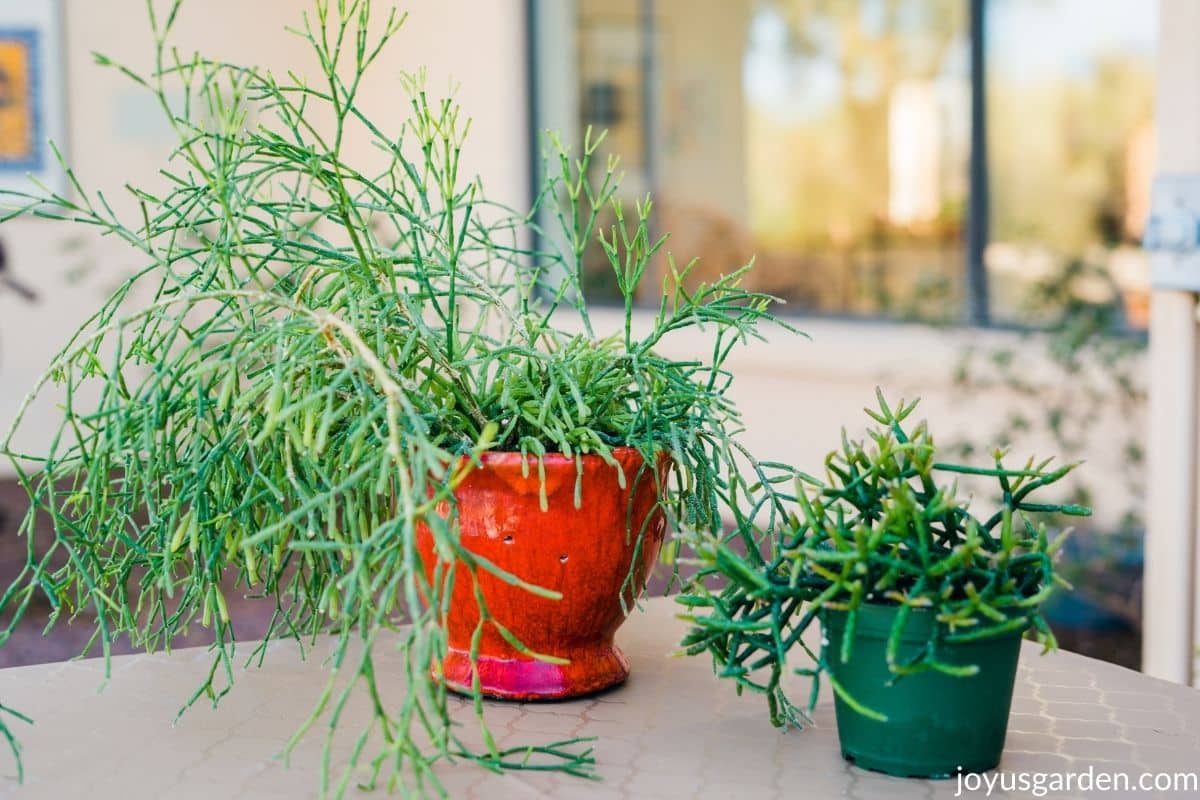
5) Make sure all of the soil is dry
Just because the top of the soil is dry, it doesn’t mean the rest of the soil is. Most of the roots are in the bottom half, so thoroughly check the soil mass if you can.
If your succulent is in a larger pot, you can always use a moisture meter to help out.
6) Don’t use a spray bottle
Put the spray bottle away – succulents don’t need misting (exceptions in the photo above). You don’t want to drench the leaves!
If you spill some water on the leaves, no worries. Just drain it off.
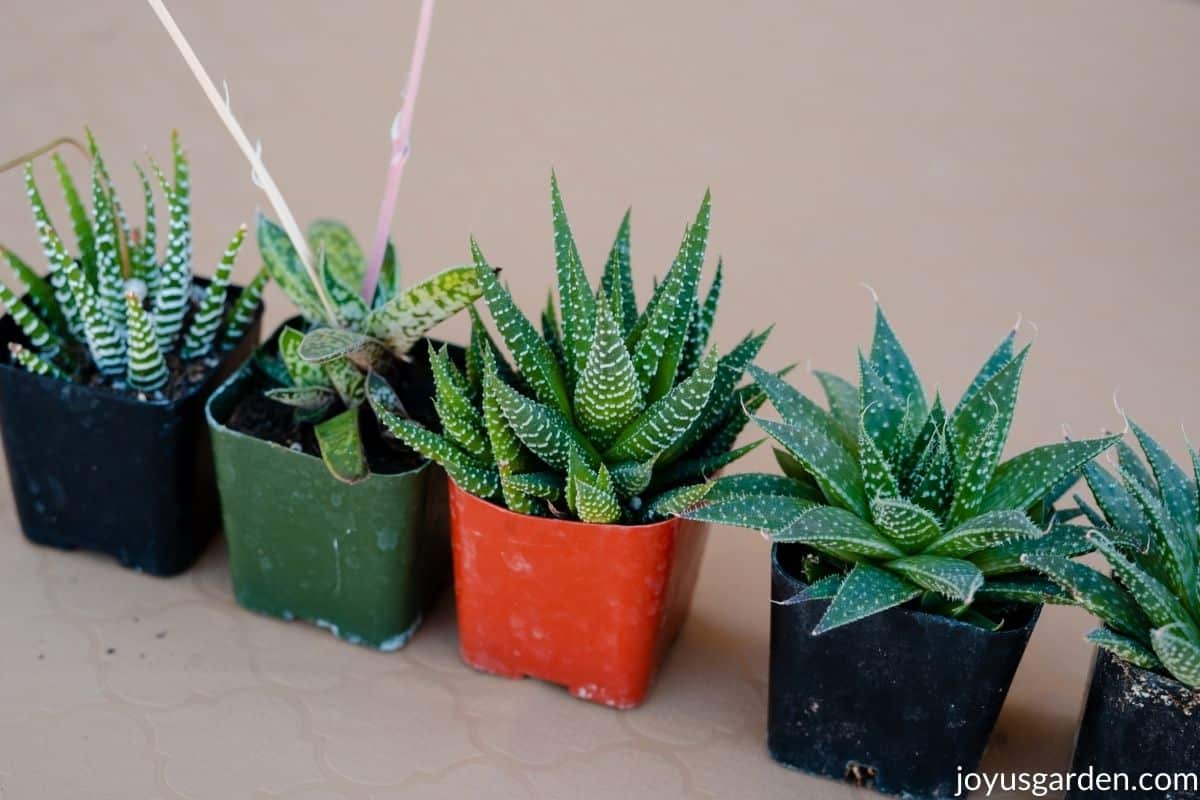
7) Monitor the temperature
The temperature comes into play. If you keep it cooler, then water less often. If you’re like me and keep yours warmer, you’ll probably have to water more often.
8) Consider these variables as well for succulent care
The smaller the pot, the more often you’ll water.
The lower the light conditions (succulents do their best in bright natural light), the less often.
The higher the humidity, the less often. The humidity here in Tucson is often below 10%. If you’re growing indoor succulents in places like Hawaii and Florida, you’ll likely water less often than me.
The fewer drainage holes, the less often you will need to water.
If your succulents are directly planted in porous containers like unglazed terra cotta or unglazed ceramic, you may have to water them a tad more often.
How To Water Succulents Indoors Video Guide
Want to learn more about How to Care for Succulents Indoors? Check out these guides!
How to Choose Succulents and Pots, Small Pots for Succulents, How to Water Indoor Succulents, 6 Most, Important Succulent Care Tips, 13 Common Succulent Problems and How to Avoid Them, How to Propagate Succulents, Succulent Soil Mix, 21 Indoor Succulent Planters, How to Repot Succulents, How To Prune Succulents, How To Plant Succulents In Small Pots, Planting Succulents In A Shallow Succulent Planter, How to Plant and Water Succulents in Pots Without Drain Holes, Indoor Succulent Care for Beginners, How To Make & Take Care Of An Indoor Succulent Garden
Water temperature
I use room-temperature water for all my plants, indoor succulents included. I figure this is easier on the roots – no change of shock from scalding hot or freezing cold.
Time of day for watering succulents
I’m honestly not sure if this matters, but I water all of my plants during the daytime. I do this because the natural light in the morning and afternoon makes it easier for me to see the soil mass. Besides, most plants like to rest a bit at night so I leave them be at this time.
What I Use To Water Succulents Indoors
On the regular, I use the small watering can because most of my succulents indoors are in small containers. I use a larger can for my larger succulents like Pencil Cactus and Euphorbia ingens.
I use the squeeze bottle with the pointed spout pictured above to water succulents that are tricky to do with a can. This may be because the plants are very small or tightly planted in a smaller container. It’s also good for watering succulent leaves you may be propagating.
Indications Of Watering Issues
As shown in the photo below, the left leaf indicates too much water. It’s mushy and the color has faded.
The one on the right indicates too little water. It has lost its plumpiness and is wrinkled.
Watering Succulents Indoors FAQs
The leaves and stems of an under-watered succulent will start to look less plump and somewhat shriveled.
Succulents like dry conditions, but they do need watering every now and then!
I water from the top with room temperature water.
Carefully! I use a bottle with a long narrow spot so I can control the water coming out.
For you, it might be easier to do set measurements, for example, 3 tablespoons every 2-3 weeks. You don’t want the water to build up at the bottom of the succulent pot.
The first thing you might want to do after repotting is watering, but hold off.
I let succulents dry 5-7 days after repotting and then give them a thorough watering, ensuring all the water freely drains out.
No way! Succulents store water in their thick leaves, stems, and roots, so too much soil moisture will lead to root rot.
It’s not the best way. I prefer to use room-temperature water for all my indoor plants, including succulents.
You want to back off on the watering frequency and perhaps the amount of water you use. How much depends on your home’s environment.
Succulents like to dry out before watering again.
The schedule depends on your environment, the pot size, and the composition of the soil.
The watering frequency might be once every week, once every 2 weeks, or once every 3-4 weeks.
To put it in a nutshell, an overwatered succulent will look mushy. The leaves will get paler, and eventually turn brown.
If your succulent has gone an extended amount of time without enough water, the best thing to do is to water it thoroughly making sure all the water drains out. Then, let it go almost dry before watering again.
You don’t want to overcompensate by watering your succulent every 2-3 days. This will cause root rot and do it in.
Watering succulents indoors is simple. The key thing to keep in mind is that too much water will do them in. Coming up next in this series: 6 important things to know about growing succulents indoors.
Interested in more info on how to water succulents? Our post on how often do succulents need water will help out, especially if you want to grow them outdoors.
Happy gardening,

